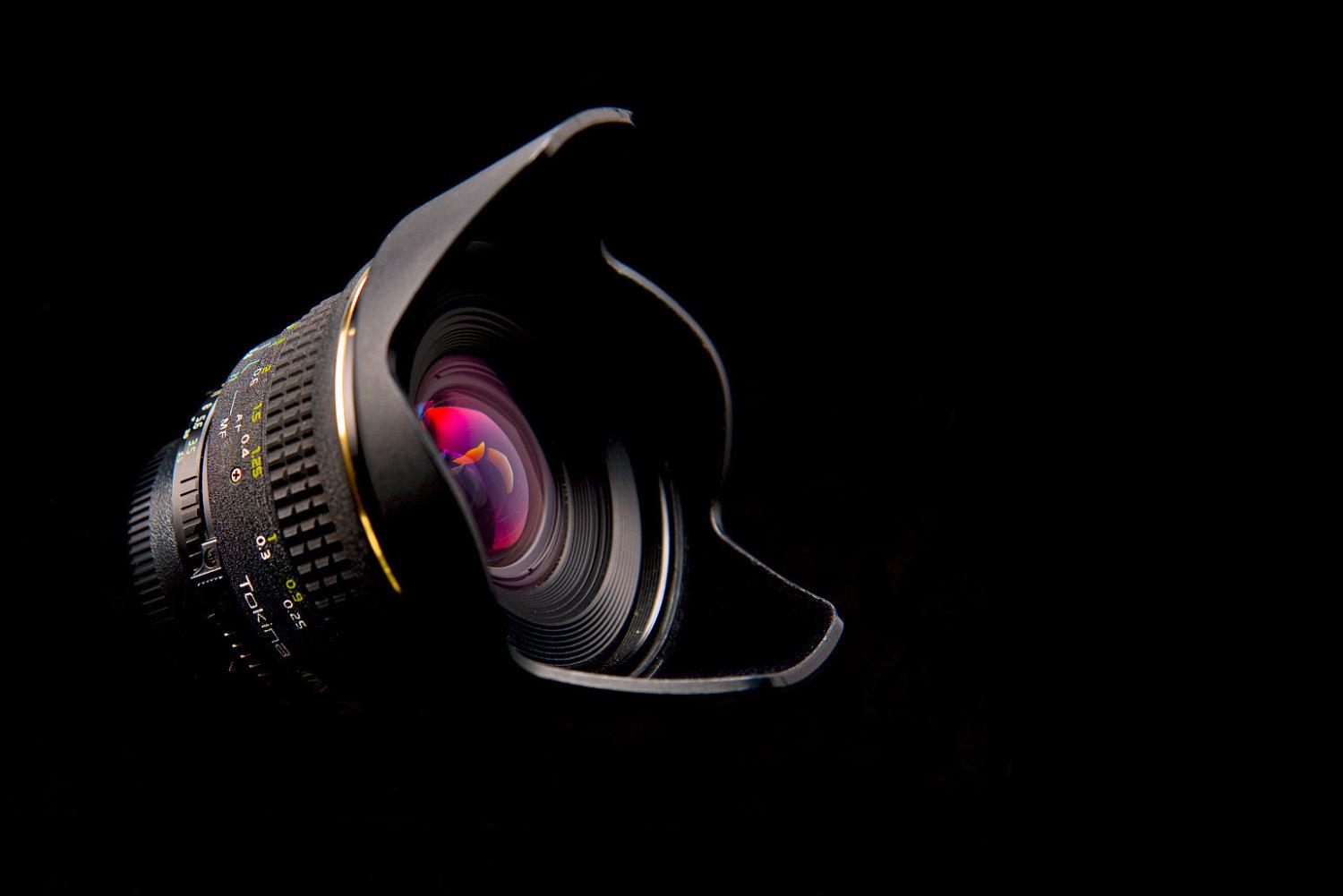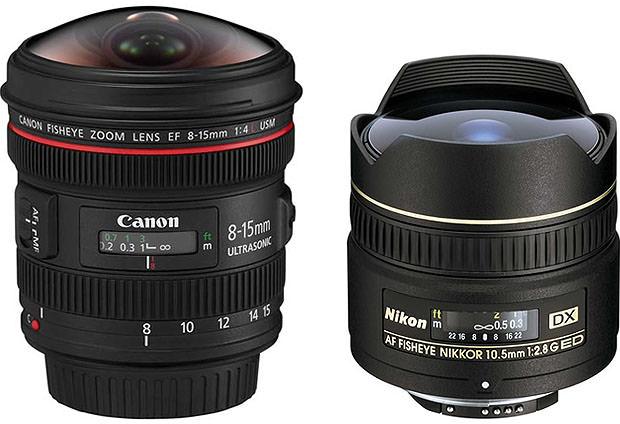A fisheye lens, also known as an "ultra wide" or "super wide" lens, is a type of wide angle lens which can capture an extremely wide image, typically around 180 degrees. The images they produce are highly distorted, giving them a dynamic, abstract feel.
Fisheye lenses are popular for photographing extremely wide panoramas of landscapes and the sky, and for shooting close-up subjects such as crowds, interiors, and architecture. They are also commonly used to photograph action sports such as skateboarding, snowboarding, and surfing.
As well as being used for practical purposes, many artists have adopted them due to the unusual, distorted images they produce. They use them to take intriguing photographs of all types of subjects, from still life to portraits.
Fisheye lenses allow an extremely wide angle of view.
Types
There are two main types of fisheye lenses, circular and full-frame. Each produces a very different effect.
Circular Fisheye Lenses
A circular fisheye lens is one which captures a full 180 degree view in all directions. This results in a circular image, with the edges of the frame being black.
Circular fisheye lenses cover 180 degrees in all directions, but have black edges. Image by Piero Fissore.
These more extreme fisheye lenses tend to be used for artistic purposes such as skateboard photography or for shooting unusual landscapes and cityscapes.
Full-Frame Fisheye Lenses
A full-frame fisheye lens only captures a 180 degree field of view along its diagonal. The horizontal and vertical sides of the image are less than 180 degrees (typically around 150 degrees horizontal and 100 degrees vertical).
Full-frame fisheye lenses cover 180 degrees along the diagonal only, producing a less wide-angle, rectangular photo without the black borders.
Although they do not cover such a wide angle, photos taken using a full-frame fisheye lens are rectangular and do not have black edges. This makes them more suitable for practical purposes such as traditional landscape photography and shooting building interiors.
Focal Length
For cameras with a 35mm sensor or film, a typical circular fisheye lens might have a focal length of 8mm to 10mm. Full-frame lenses have slightly longer focal lengths, usually 15mm to 16mm.
Crop Factor
As with all lenses, the focal length is effectively increased for cameras with a sensor smaller than 35mm. To find the equivalent focal length of a lens, you need to multiply its focal length by the camera's "crop factor". For example, a 10mm fisheye lens on a camera with a crop factor of 1.5 will have an effective focal length of 15mm. This will produce a narrower field of view.
Because of this, many manufacturers produce fisheye lenses designed specifically for cameras with smaller sensors. These have even shorter focal lengths, sometimes as low as 1mm, so that they produce a full 180 degree photo.
Angle of View
A "true" fisheye lens is considered to be one that can capture 180 degrees at the widest point. However, some manufacturers sell lenses which go even further, up to 220 degrees. These lenses tend to be very big, heavy, and expensive, and so are generally only used for specialist, technical work.
If you want to capture more than 180 degrees, it is possible to stitch more than one fisheye photo using software such as Photoshop. This allows you to create images which cover as much as 360 degrees, making for some very interesting, abstract compositions.
Image Distortion
Fisheye lenses suffer from "barrel distortion", where subjects at the centre of the frame appear to bulge outwards, and straight lines curve wildly. This type of image is known as a "curvilinear" image.
Fisheye lenses produce noticeable barrel distortion, but this can be used to great artistic effect. Image by Tom Harnish.
In normal wide angle lenses, this can be corrected to produce a "rectilinear" image, where the perspective in the scene looks normal, and straight lines are straight. However, a fisheye lens produce an angle of view which is too extreme for this type of correction.
This generally isn't a problem, because most photographers use fisheye lenses precisely because of the interesting, unnatural distortions they produce, and so this is part of their appeal.
Depth of Field
Because they capture such an extreme angle, fisheye lenses have a very large apparent depth of field. This means that your shots will appear sharply focused from front to back. This makes them ideal for capturing scenes with interesting subjects in the foreground and background.
On the other hand, this extreme depth of field makes it almost impossible to isolate your subject by throwing the background out of focus. This is something you need to be aware of when framing your shot, so that you can choose an uncluttered background.
Alternatives
A cheap alternative to a proper fisheye lens is a fisheye conversion lens, often simply called a fisheye converter. These accessory lenses attach to your existing lens via the filter thread, and give you a wider viewing angle.
All fisheye converters have a magnification factor which determines the effective focal length you will get. For example, if you have a 35mm wide angle lens, a 0.42x fisheye adapter will take this down to around 15mm (35 x 0.42 = 15). This would produce a roughly full-frame image on a 35mm sensor.
However, fisheye converters have serious downsides. They generally produce very poor image quality, with blurred focusing and severe vignetting (darking around the edges). They also suffer from lens flare, don't accept filters, and can prevent the lens from zooming.
Fisheye adapters are great fun if you simply want to experiment with fisheye photography, but they should not be seen as a realistic alternative to a proper fisheye lens.
Buying a Fisheye Lens
All of the major lens manufacturers sell fisheye lenses. Canon and Nikon make the best lenses for their own cameras, while others such as Sigma, Tokina, and Tamron make excellent, cheaper alternatives.
Online forums and review sites are a great place to find information about specific models, to help you choose the best lens for your purposes. You can also get some great deals by shopping online through sites like Amazon and Adorama.
Cover image by Stefan Schmitz.

